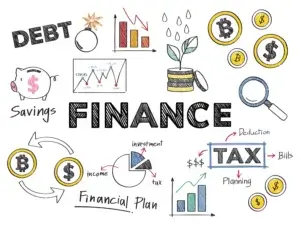The financial statements consist of the income statement, balance sheet, and cash flow statement. These three reports provide investors with a brief snapshot of a company’s financial health and underlying value, making them valuable tools for analysis and decision-making.
Financial statements
Financial statements can be broken down into the following categories: the Balance Sheet, the Income Statement, and the Cash Flow Statement. Such documentation makes it possible to examine and evaluate several aspects of an organization’s financial health and performance.
- Balance Sheet: To see the company’s assets and liabilities: Assets = Equity + Liabilities
- Income statement: A Profit and loss account is a record of a company’s revenues and expenses for a specific period of time: Profit & Loss = Revenue – Expense
- Cash flow statements: To illustrate the actual cash flow Operating + Investing + Financial Activities ( Direct and Indirect Methods)
BALANCE SHEET
Balance sheet = Opening Balance sheet = Closing Balance sheet
Balance sheet =
+ Opening Balance sheet
+ Income statement
+ Cashflow ( Operating Profit)
+ Closing Balance Sheet
Balance Sheet
Assets = Equity + Liabilities
Total Assets:
Current assets ( Less than one year )
Cash, Accounts Receivable, Prepaid expenses, Inventory
+ Non-current assets ( more than one year )
Intangible assets, Property & Equipment, Goodwill, Patents, Trademarks, Technology
Total liabilities:
Current liabilities ( Less than one year )
Accounts Payable, Accrued expenses, Unearned revenue
+ Non-current liabilities ( more than one year )
Long-term debt, Other long-term liabilities
Total equity:
Shareholders’ equity
Equity Capital, Common shares, Retained Earnings
Income Statement ( P&L from Operations )
Earned or Incurred
The income statement details the retained earnings for the year.
Retained Earnings = Net income – Dividends
Net income = Revenue – TAX
Revenue
Gross Profit + Earnings before Interest & taxes ( EBIT) +Earnings before taxes ( EBT ) Net income
Gross profit
Revenue – Cost of Sales
Cost Of Sales = Cost of Goods Sold + Cost of Direct Labor + Overhead Manufacturing Cost.
Cost Of Goods Sold = Beginning Inventory + Purchases in current Period – Ending Inventory
Cost Of goods sold = Inventory change formula = Purchases + Inventory decrease – Inventory increase
Earnings before Interest & taxes ( EBIT)
Revenue – Cost of Sales – Indirect expenses + Other Income – Other Expense
Earnings before taxes ( EBT )
Revenue – Cost of Sales – Indirect expenses + Other Income – Other Expenses + Interest Income – Interest Expense.
Net income
Revenue – Cost of Sales – Indirect expenses + Other Income – Other Expenses + Interest Income –
Interest Expense – TAX
Cash flows ( Operating Profit ) – Indirect
Paid and Received
Cash Flow Operating Profit + Operating cash flow – Net operating cash flow – Change in cash
Operating cash flow
Depreciation + Non Cash – Inventory – A/c receivable + A/c payable
Net operating cash flow
Net interest paid + Tax paid
Change in cash
Capital expenditure + Dividends + Change in Equity/debit ( Cr/Dr)
Cash flow – Direct
Change in Cash = From sales, Purchases, and Expenses
Cash Inflow and Outflow
When you compare the balance sheets of two different years, you will get an understanding of cash inflow and cash outflow.
Cash inflow = Liabilities + Positive
Cash Outflow = Assets – Negative
If an increase in assets has resulted in a cash outflow, the difference should be recorded as a negative number.
Increasing liabilities will result in a cash inflow; consequently, the difference should be recorded as a positive number.



